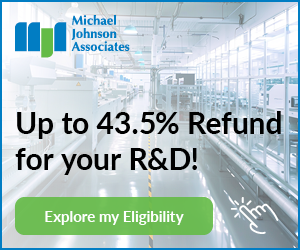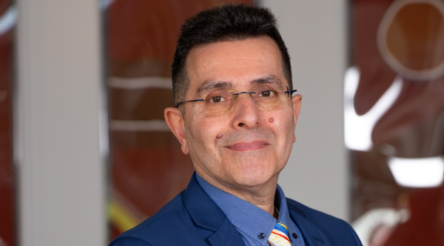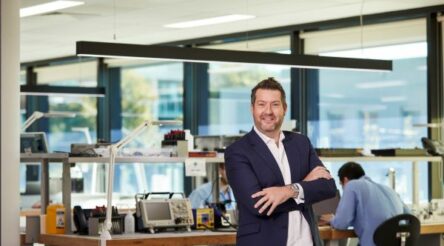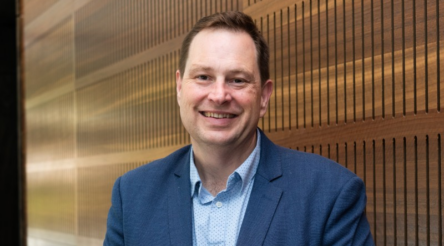Towards 3% R&D – Boosting industry and research collaboration, by Dr Tony Peacock

With business and direct government spending on R&D falling, and only university research rising, our editorial series – Towards 3% R&D – Turbocharging Australia’s Innovation Effort – turns to collaboration between industry and public sector researchers. By Dr Tony Peacock.
If Australia is to turbocharge our R&D to reach 3% of GDP, businesses will have to do most of the heavy lifting.
Our Business Expenditure on R&D (BERD) has always lagged behind where we should be as an advanced economy. Governments can help in several ways.
They can link grants to matching expenditures from businesses and they are the major contributor to the other big area of R&D spending – HERD or Higher Education Expenditure on R&D.
By any measure, Australia has a world-class university sector. We also have excellent government research bodies like CSIRO, ANSTO and AIMS.
A key to improving overall R&D outcomes in Australia is better linking our research sector to our businesses.
It’s a bit too simple to say that we are great at research and bad at commercialisation, but there is a trend there.
Most new ideas and innovations in Australian business come from competitors and customers – businesses are not waiting for commercial cool stuff from our universities and research labs.
@AuManufacturing will publish contributions from readers for our series – Towards 3% R&D – turbocharging our national innovation effort – for the next month and in an e-Book, and we urge you to contribute. Call Peter Roberts, 0419 140679 or write to [email protected].
So, our public researchers need to raise awareness of what they offer.
Once they get engaged, the relationship must be built to a level of trust if serious investment is to be made.
If the first meeting includes a complex IP agreement or a researcher immediately asking for funds, there probably won’t be a second meeting.
There are lots of examples of Australia’s universities doing a splendid job of engagement with industry.
Universities working with industry
For example, UNSW participated in 40 Cooperative Research Centre – Projects since the inception of that programme in 2016.
That is 2.5 CRC-Ps per funding round, whereas the other seven of the Group of Eight Universities averaged 1.5. Second on the list of participating universities in a non-Go8, RMIT University.
What do UNSW and RMIT do differently? From my perspective, they do more regular, more simple engagement with industry.
A CRC-P is a big deal for a company – they must put up serious investment and they must be the applicant (a university can’t directly apply).
Building trust takes time and must be consistent.
UNSW and RMIT both go to some lengths to train their researchers on what industry wants and needs. They don’t treat businesses as simply another funding source but see them as a pathway to impact.
How a university best engages with businesses is specific to its environment. At New York University, fostering the early development period for medical start-ups is vital to avoid them moving to Boston or San Diego.
Wake Forest University transitioned from a university that helped the tobacco industry grow to one with a strong respiratory health program. They decided there should be no wrong door for a business to engage with the university, so they instigated a concierge approach.
Both these universities have some of the highest licensing income relative to their R&D spend.
Australia’s changing R&D programmes
In Australia, we tend to instigate a new programme to address this issue. We now have Australia’s Economic Accelerator and the Industry Growth Program where we used to have Accelerating Commercialisation and the Entrepreneur’s Program.
I hope we’ve stopped fiddling with the R&D tax arrangements. Industry hates uncertainty and learning the nuances of new programmes every few years has been a major drag on industry engagement in the innovation system.
The German Fraunhofer Institutes are often held up as the best model for industry-research collaboration, and they do a very good job.
But if you go to Germany as I have with then-Chief Scientist Alan Finkel, the Germans will praise the Australian CRCs to a point that is (almost) embarrassing.
The grass is always greener.
A few things stand out to me about the Fraunhofer system.
Everyone knows what they do and how they do it. From the technicians to the participating businesses, the model for working together is well understood.
Secondly, they have a high staff turnover (14%) which they call their ‘bridge to industry’ – postdoc level people heading to businesses.
In turn, about 70% of Fraunhofer contracts come from alumni. Finally, nothing much has changed for many years – there is a lot of stability in the arrangements, giving the time to develop and foster the trusted relationships to make industry-research collaboration work.
Australian research organisations
Australian research organisations are capable of great success stories. We just need more of them.
We need lots of contact points and the ability to start small. There’s no doubt our organisations are getting better.
More consistency from governments will help businesses have more confidence to invest. Businesses need to engage and understand what research organisations can and can’t do for them.
Further reading:
Towards 3% R&D – The Statistics Do Not Lie By Dr John Howard
Tony Peacock FTSE FAICD is the former CEO of the Cooperative Research Centres Association. He is chairman of Ten Carbon Chemistry and the Australasian Pork Research Institute. He is a director of the Marine Bioproducts CRC and the Solving Antimicrobial Resistance in Agribusiness, Food and Environments CRC. He was the 2014 Monash University Churchill Fellow on university-business relationships in the USA, UK, Germany, and Singapore and is an Adjunct Professor at the University of Canberra.
This series is brought to you through the support of our principal sponsor, public accounting, tax, consulting and business advisory BDO, and R&D tax incentive consultancy Michael Johnson Associates.
Picture: Dr Tony Peacock
@aumanufacturing Sections
Analysis and Commentary Awards Defence Manufacturing News Podcast Technology Videos












